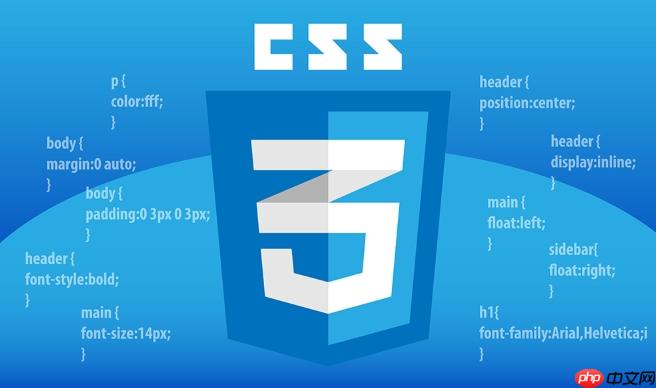使用CSS实现页脚固定有三种方法:1. fixed定位使页脚始终在视口底部,但需避免遮挡内容;2. absolute定位配合父容器min-height实现粘性页脚,适合内容较少时保持页脚在页面底端;3. Flexbox布局通过flex:1让主体占剩余空间,推荐用于现代浏览器,结构清晰且自适应。

要让页脚固定在页面底部,无论页面内容多少都能保持位置稳定,可以通过 CSS 的 position 属性配合其他布局技巧实现。以下是几种常见且有效的方法。
如果你希望页脚一直停留在浏览器窗口的最下方,即使页面滚动也不动,可以使用 position: fixed。
示例代码:
footer {
position: fixed;
bottom: 0;
left: 0;
width: 100%;
background-color: #333;
color: white;
text-align: center;
z-index: 1000;
}
注意:这种方式会让页脚覆盖内容,建议给页面主体添加 padding-bottom 避免内容被遮挡。
当页面内容较少时,页脚仍能贴在页面底部;内容多时自然向下延伸。这种方法适合“粘性页脚”效果。
立即学习“前端免费学习笔记(深入)”;
HTML 结构:
<body>
<div class="container">
<header>头部</header>
<main>内容区域</main>
</div>
<footer>页脚</footer>
</body>
CSS 样式:
html, body {
height: 100%;
margin: 0;
}
<p>.container {
min-height: 100%;
position: relative;
padding-bottom: 60px; /<em> 留出页脚高度 </em>/
box-sizing: border-box;
}</p><p>footer {
position: absolute;
bottom: 0;
width: 100%;
height: 60px;
background: #333;
color: white;
text-align: center;
}
原理是利用 min-height: 100% 让容器至少撑满视口高度,页脚通过绝对定位贴在容器底部。
更简洁、语义清晰的方式是用 Flexbox 控制整个页面布局。
CSS 示例:
html, body {
height: 100%;
margin: 0;
}
<p>body {
display: flex;
flex-direction: column;
}</p><p>main {
flex: 1; /<em> 主体内容占剩余空间 </em>/
}</p><p>footer {
height: 60px;
background: #333;
color: white;
text-align: center;
}
这样,main 区域会自动拉伸填满空白,页脚自然被推到底部。
基本上就这些。根据你的项目需求选择合适的方式:想要始终显示用 fixed,想要随内容流动但不留白用 absolute + min-height,结构清晰推荐用 Flexbox。不复杂但容易忽略细节,比如设置 html 和 body 的高度。
以上就是如何通过css position实现页脚固定的详细内容,更多请关注php中文网其它相关文章!

每个人都需要一台速度更快、更稳定的 PC。随着时间的推移,垃圾文件、旧注册表数据和不必要的后台进程会占用资源并降低性能。幸运的是,许多工具可以让 Windows 保持平稳运行。

Copyright 2014-2025 https://www.php.cn/ All Rights Reserved | php.cn | 湘ICP备2023035733号